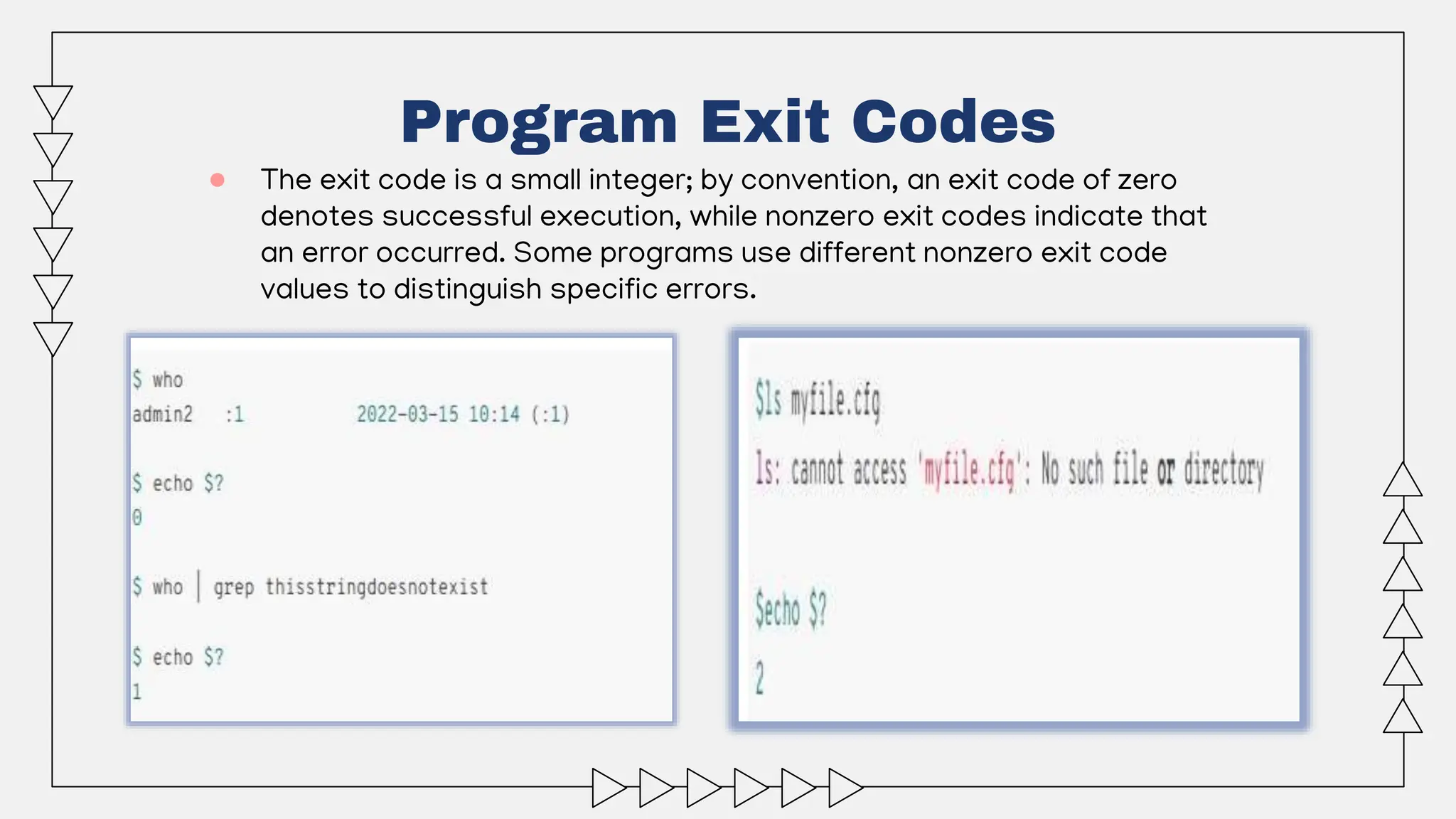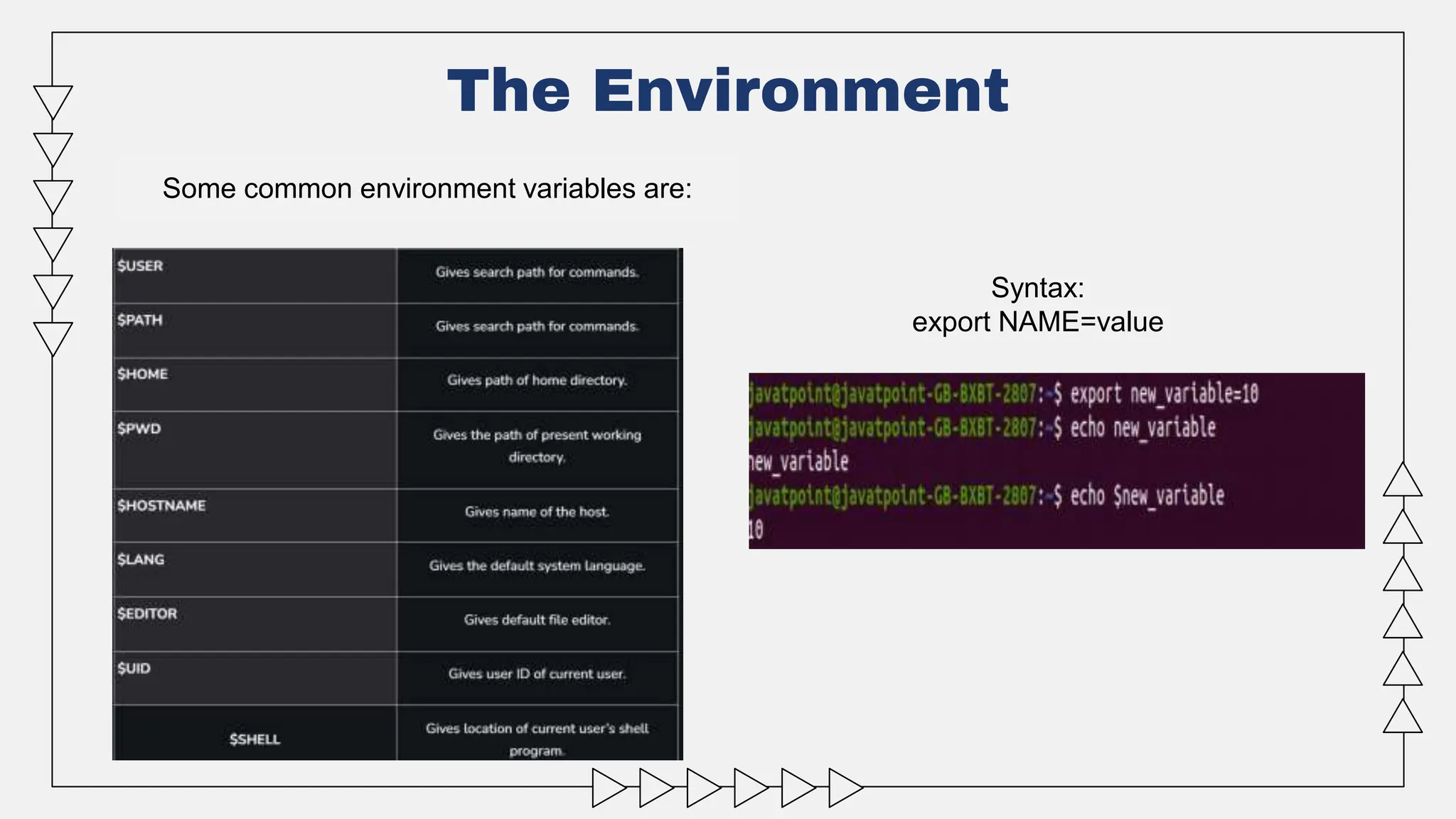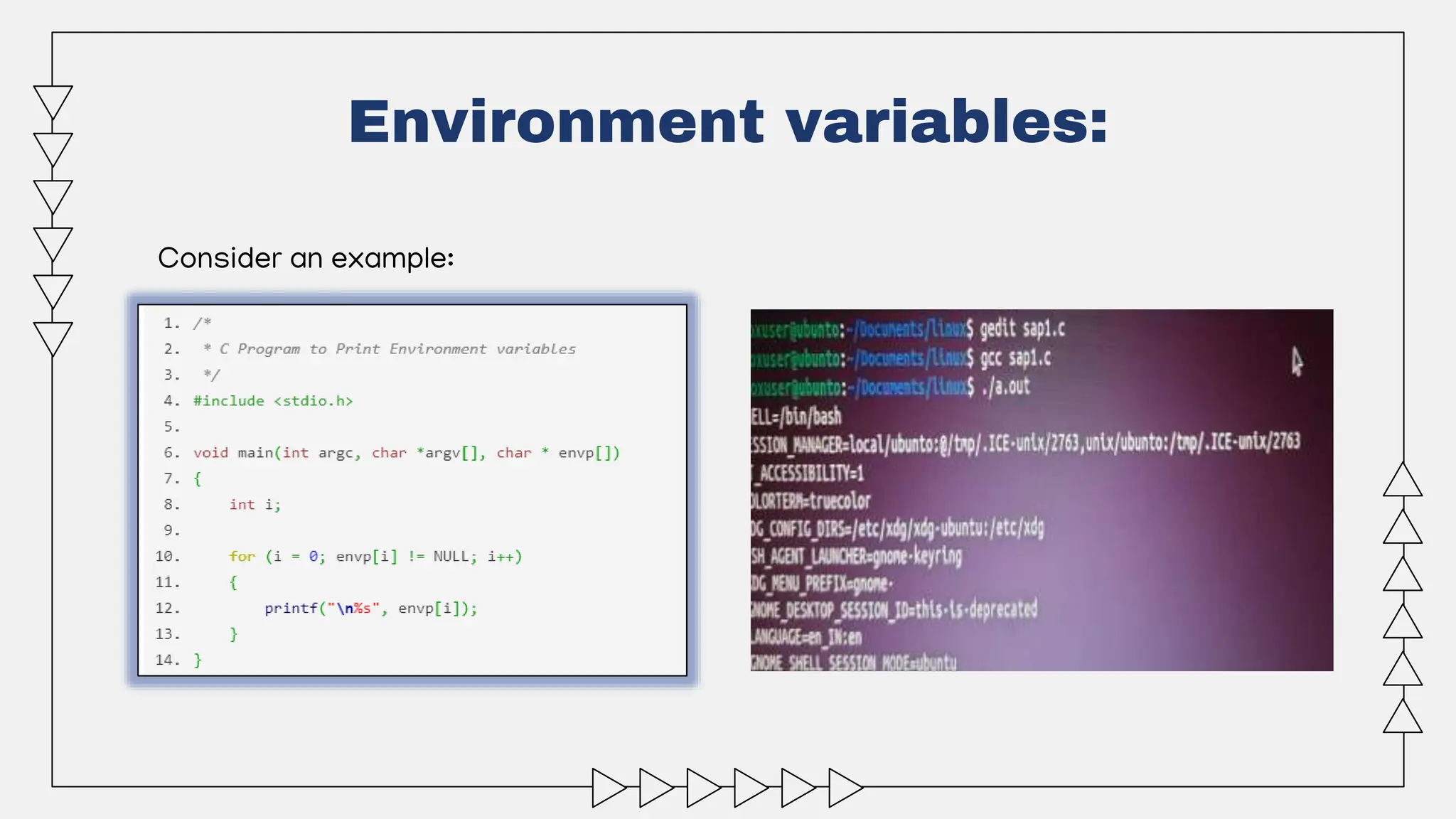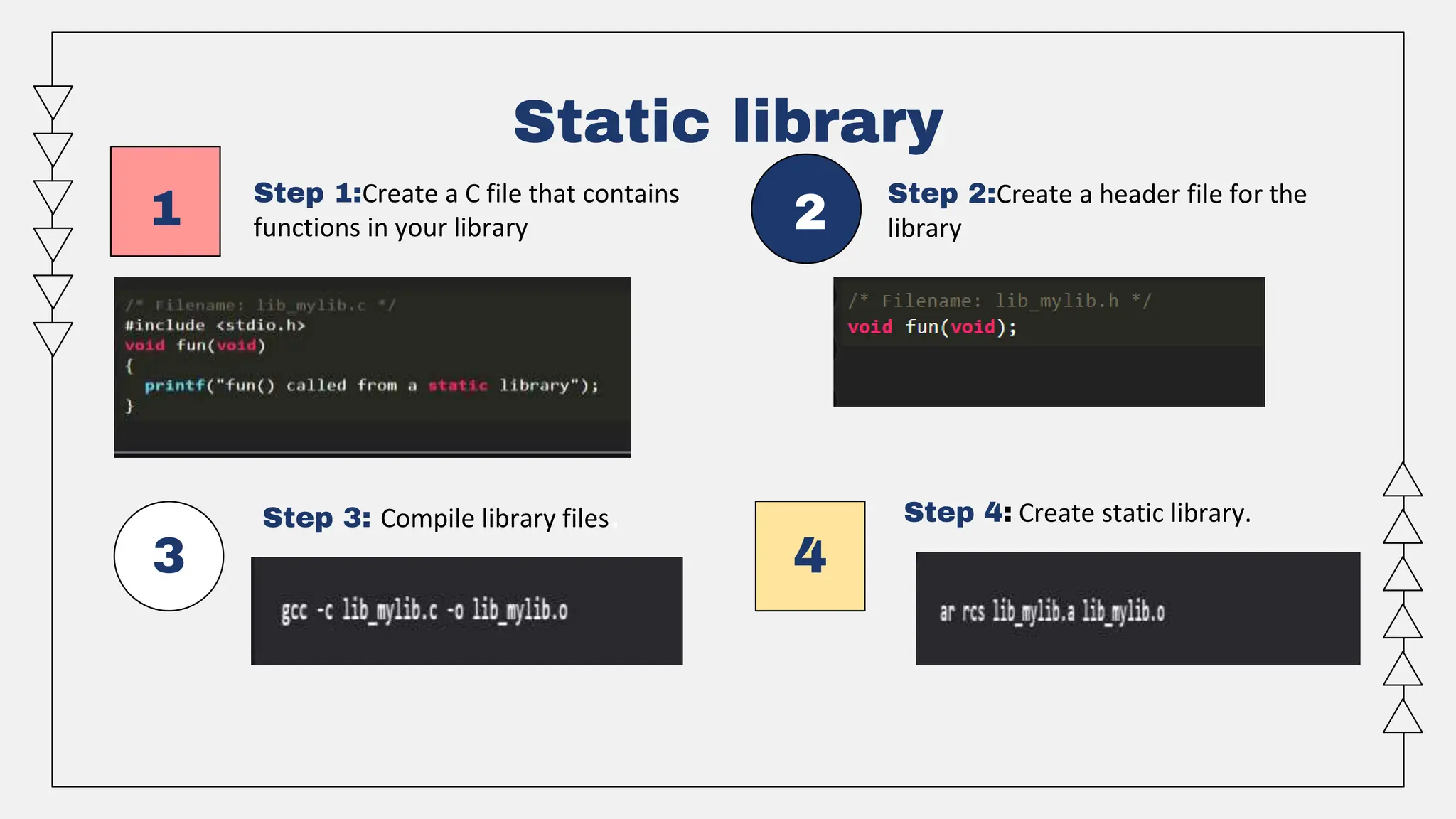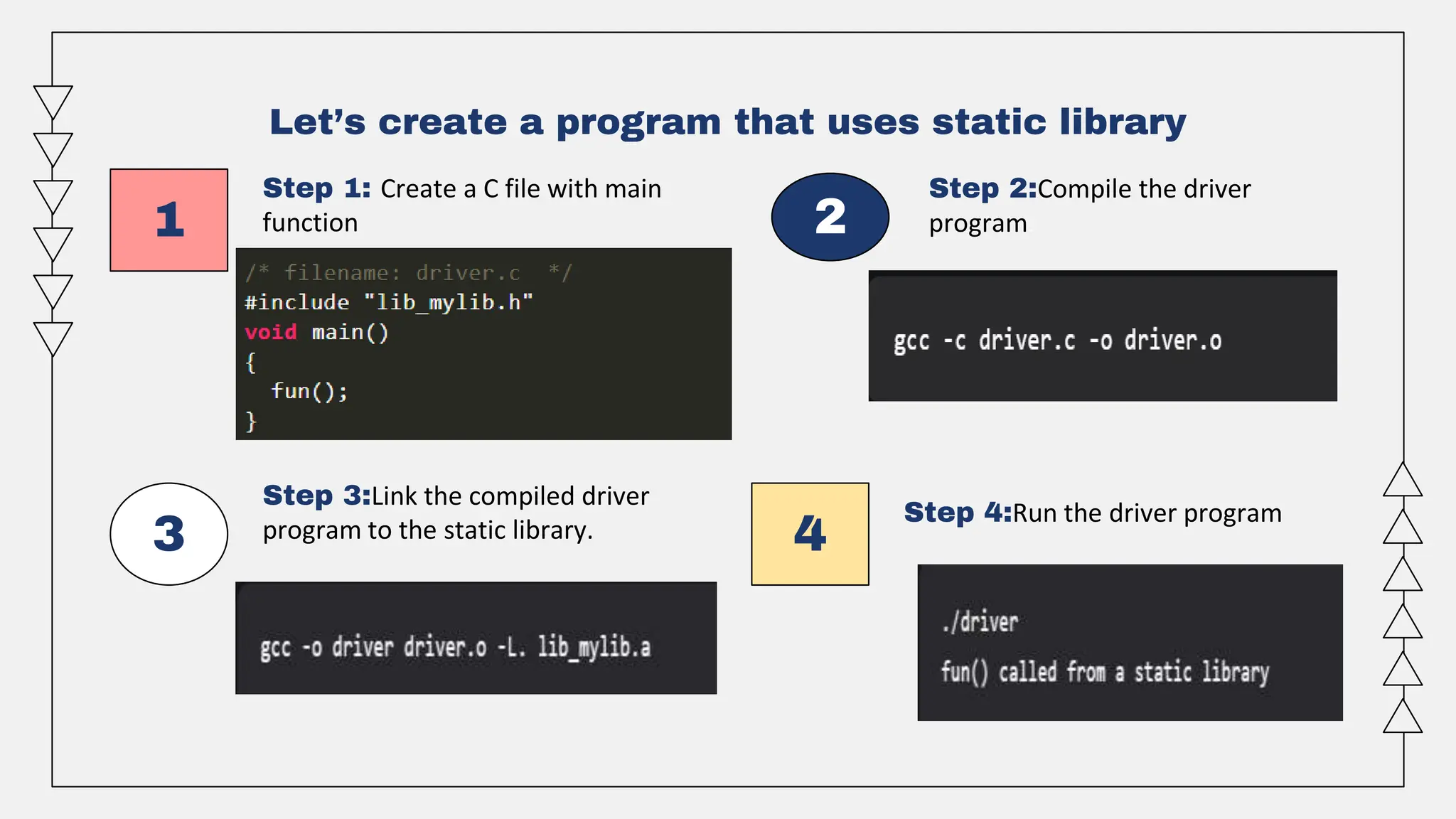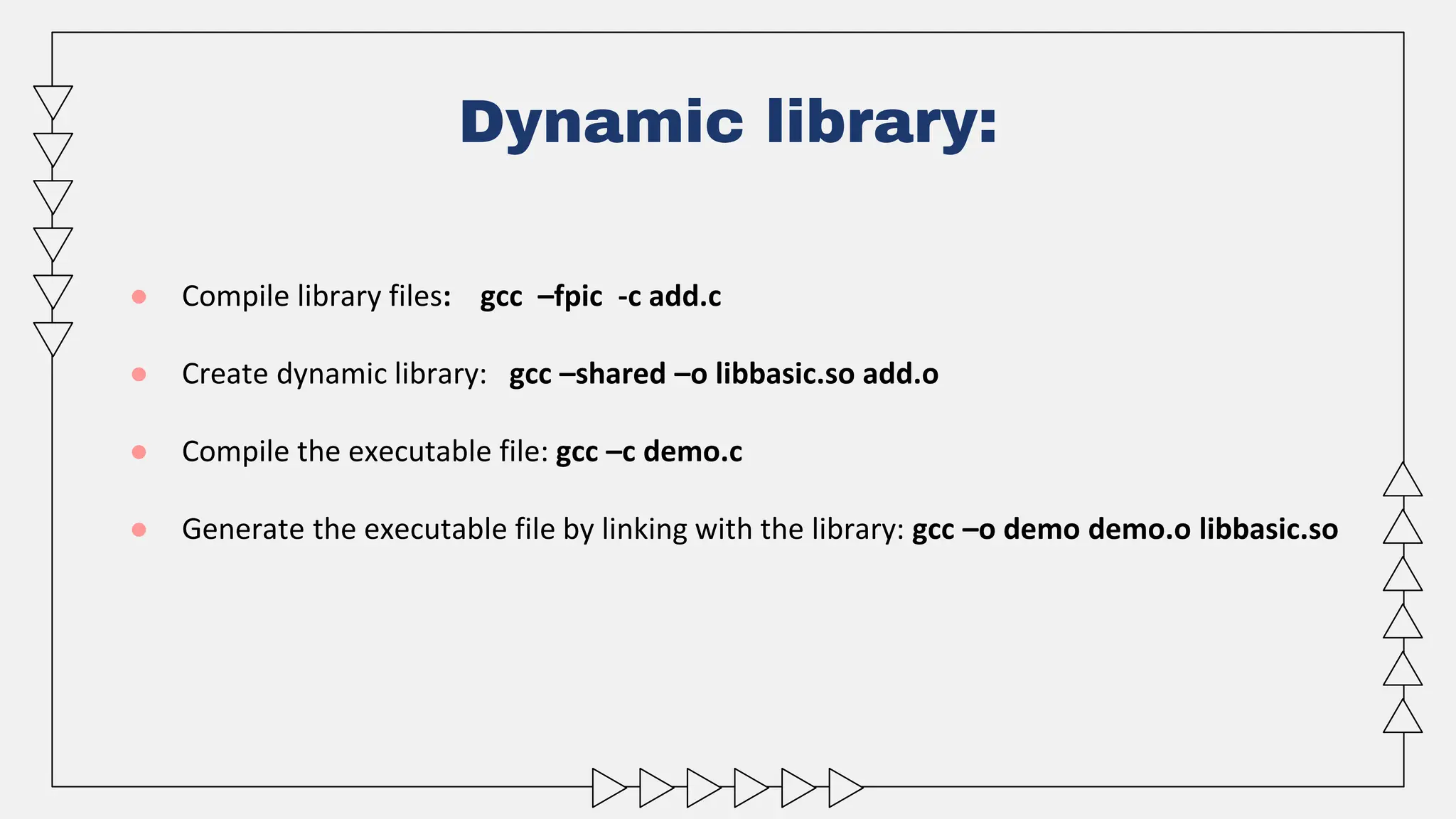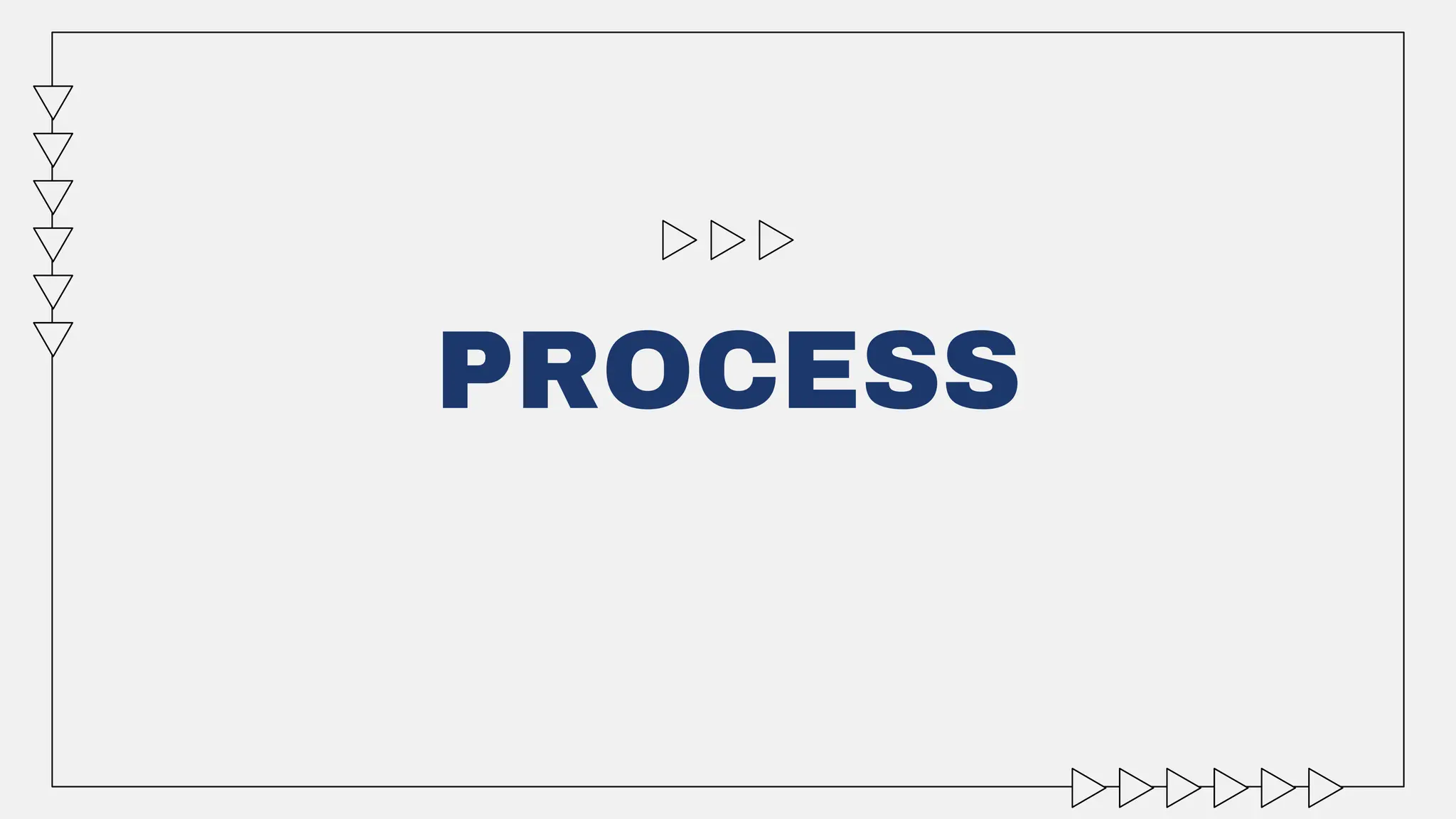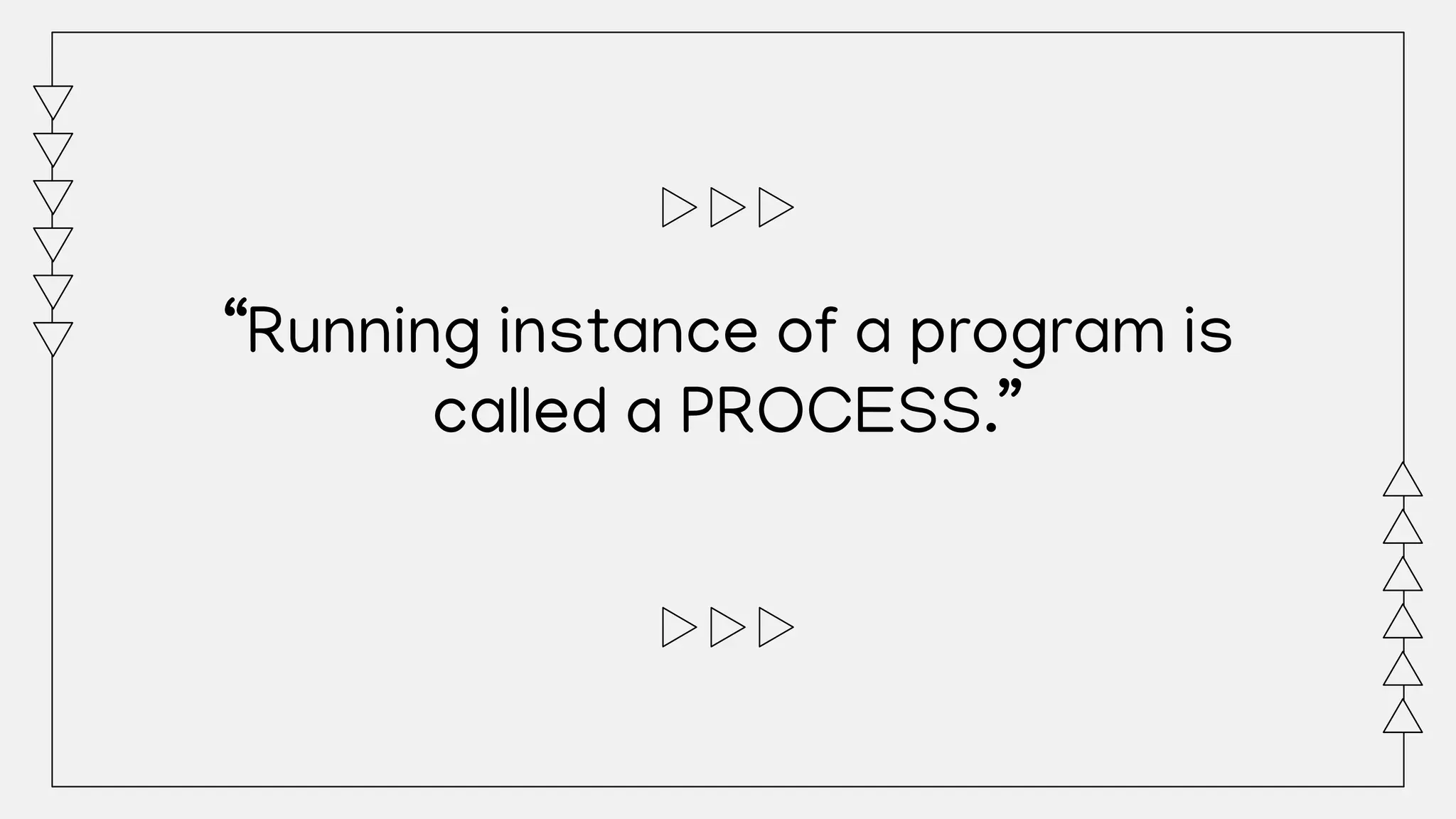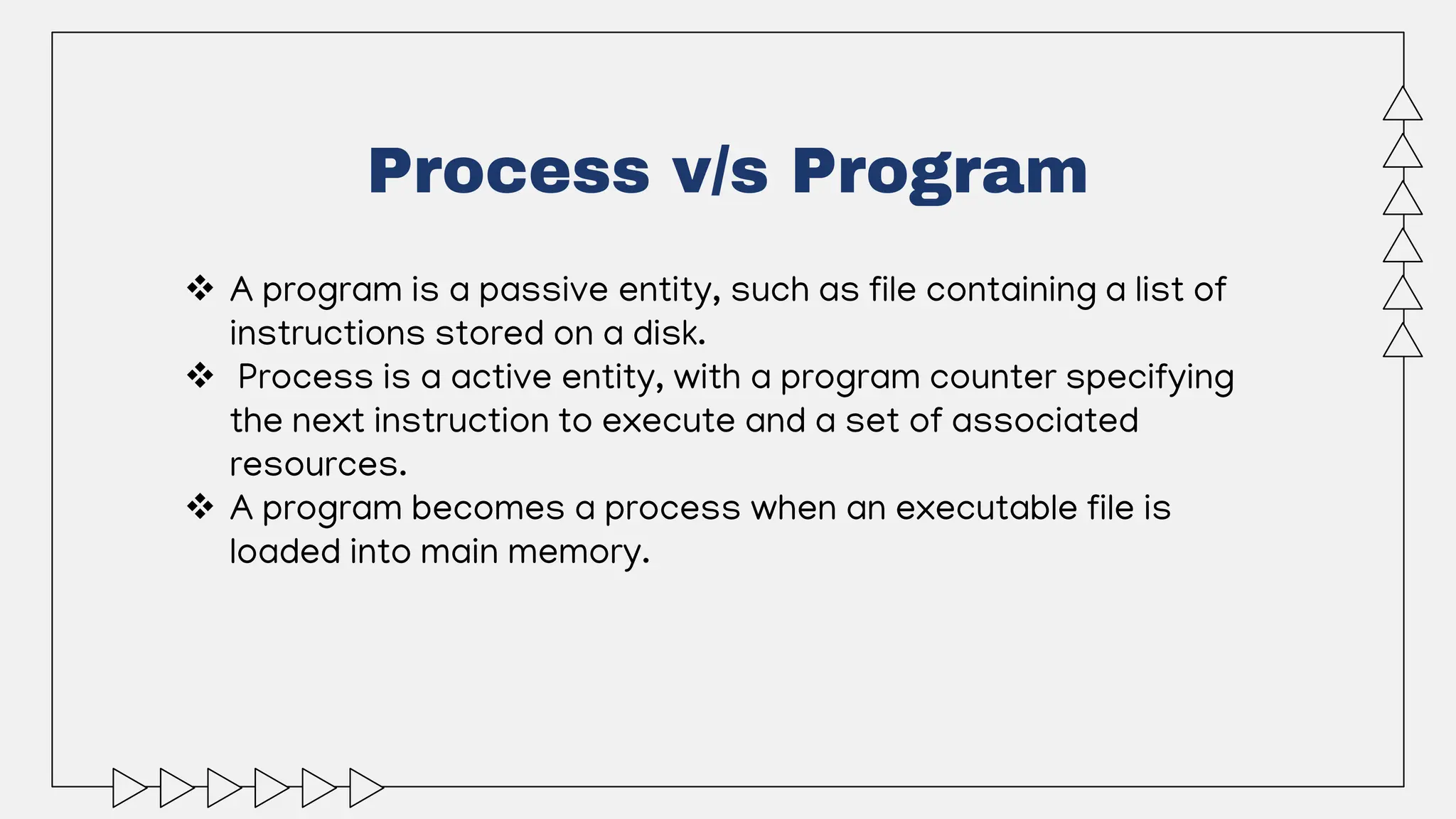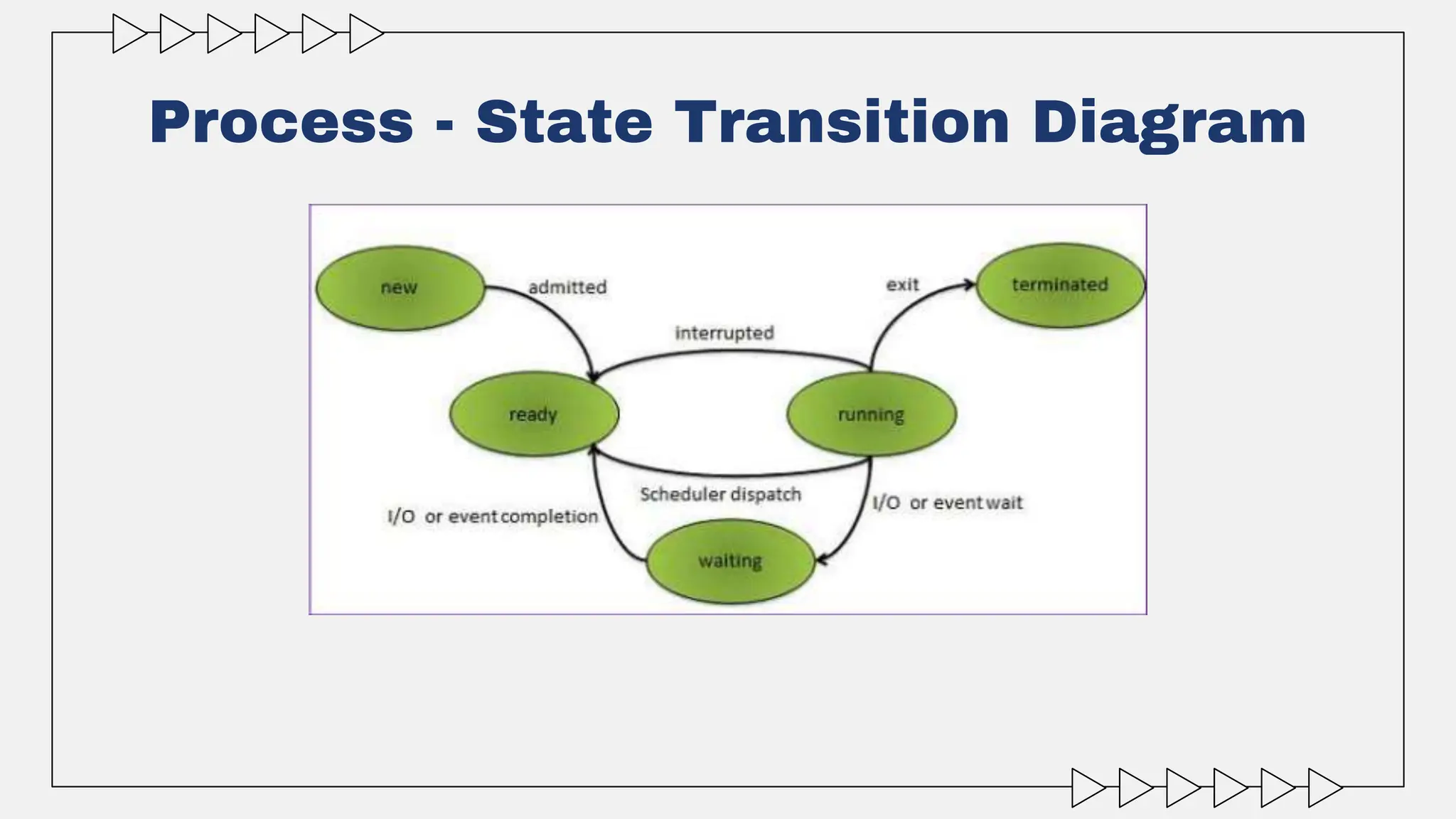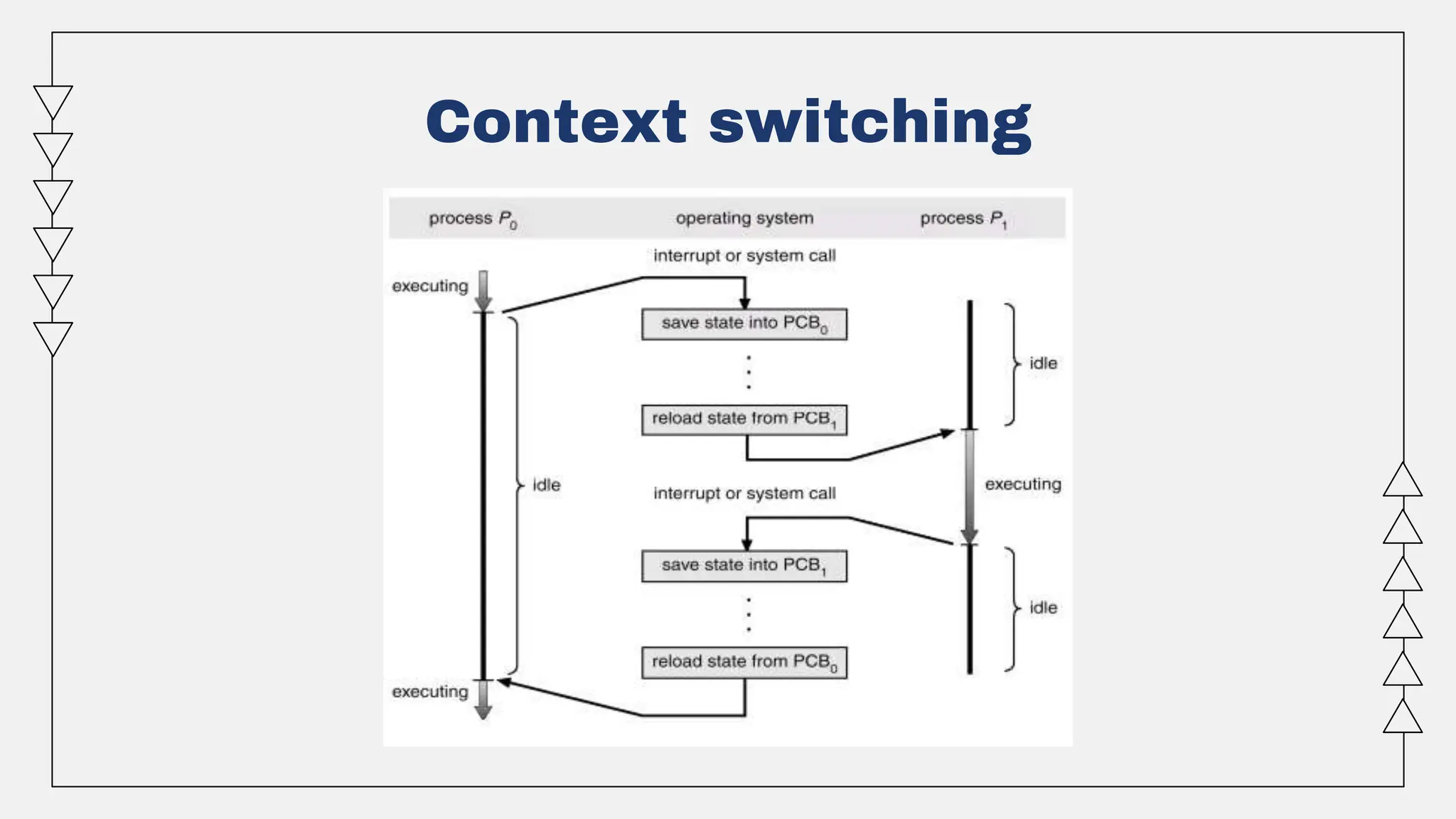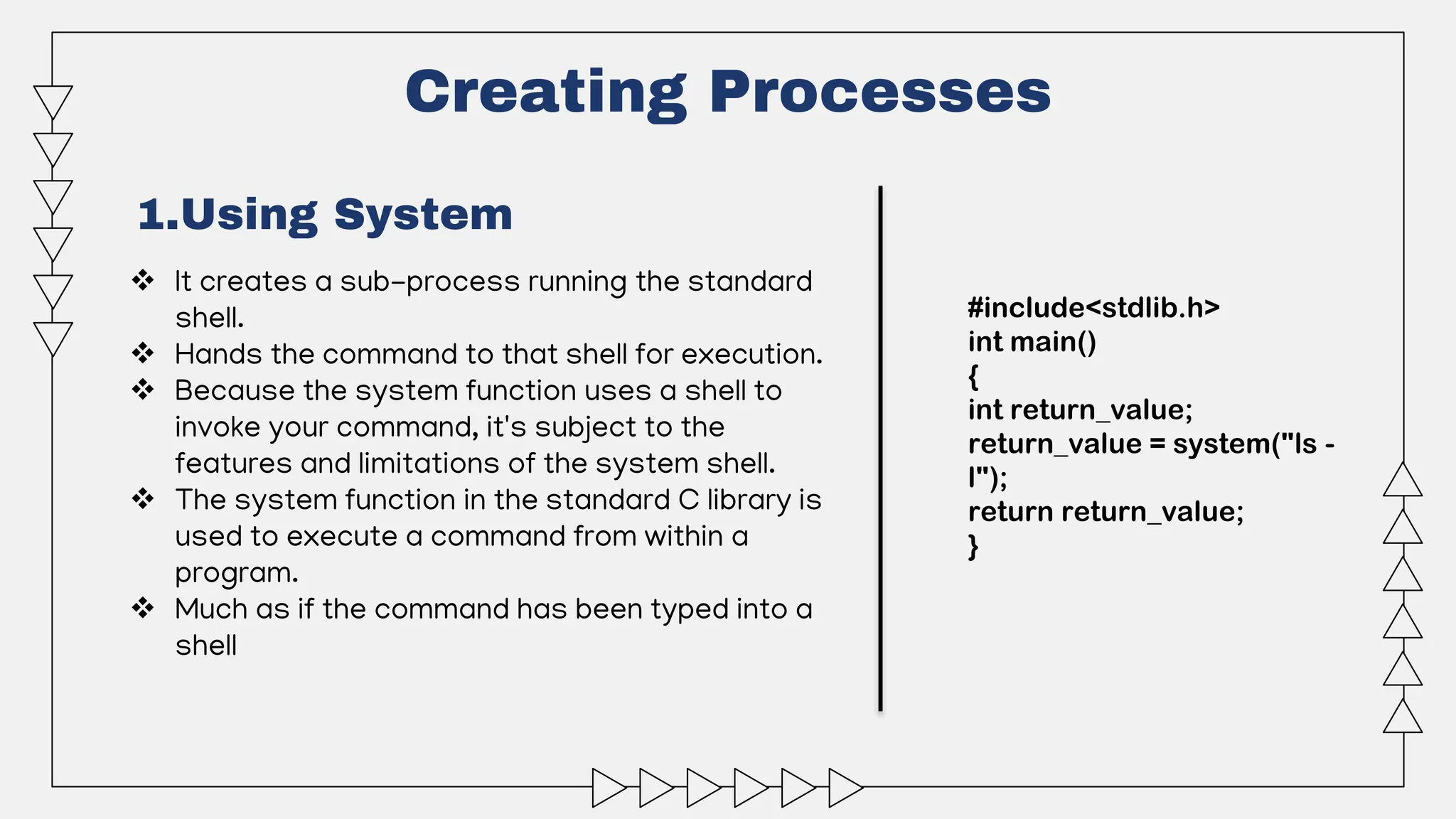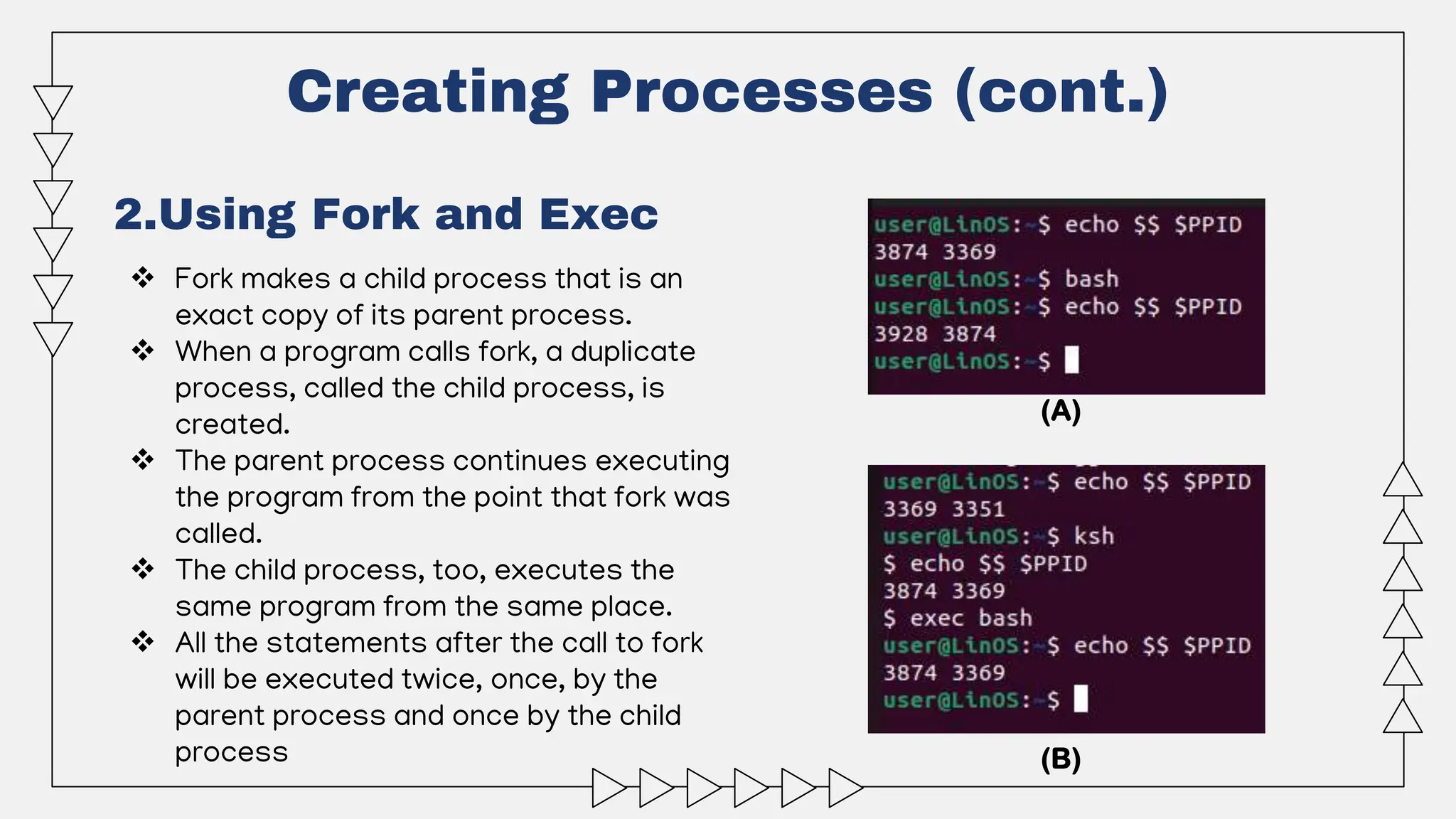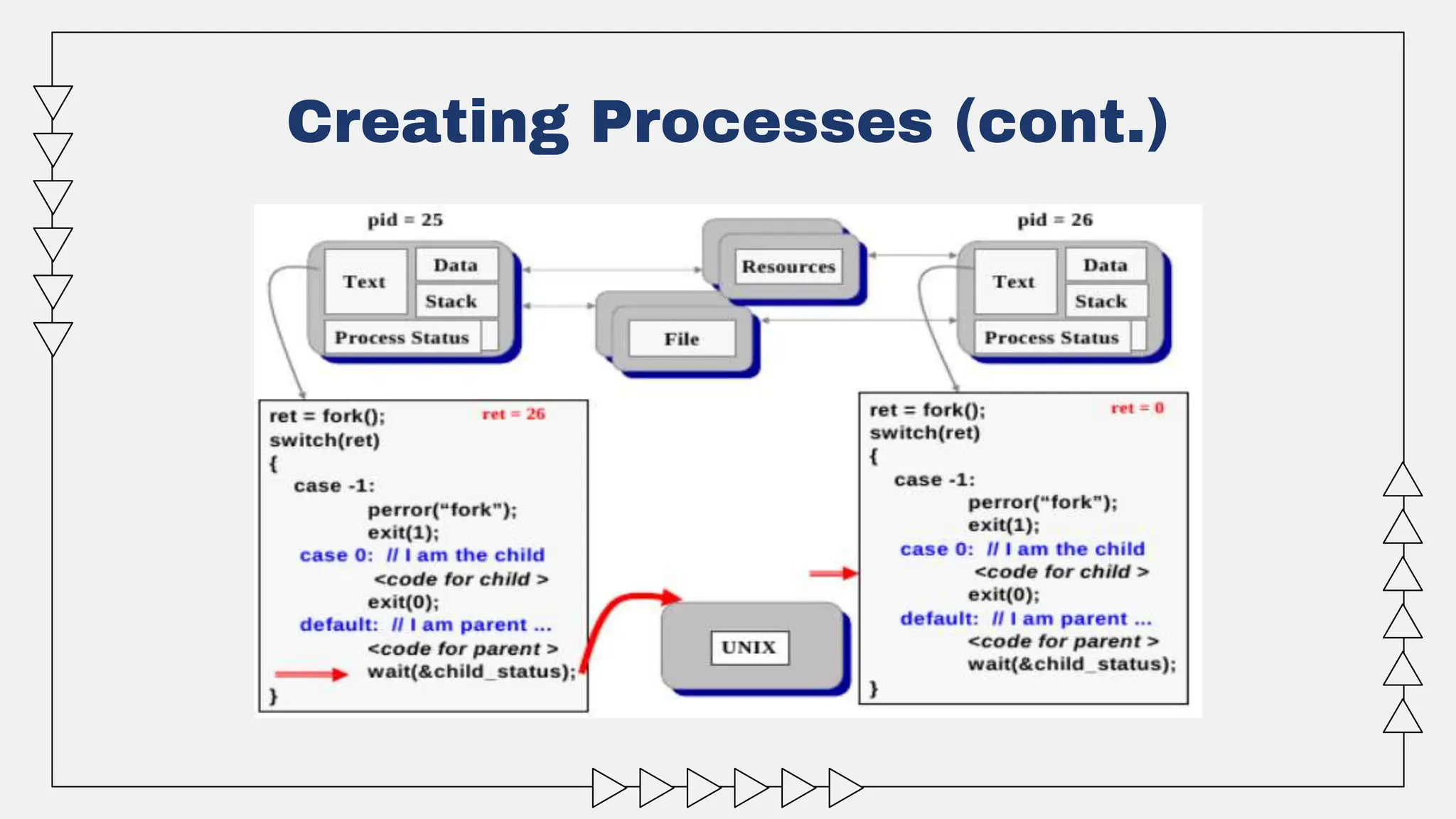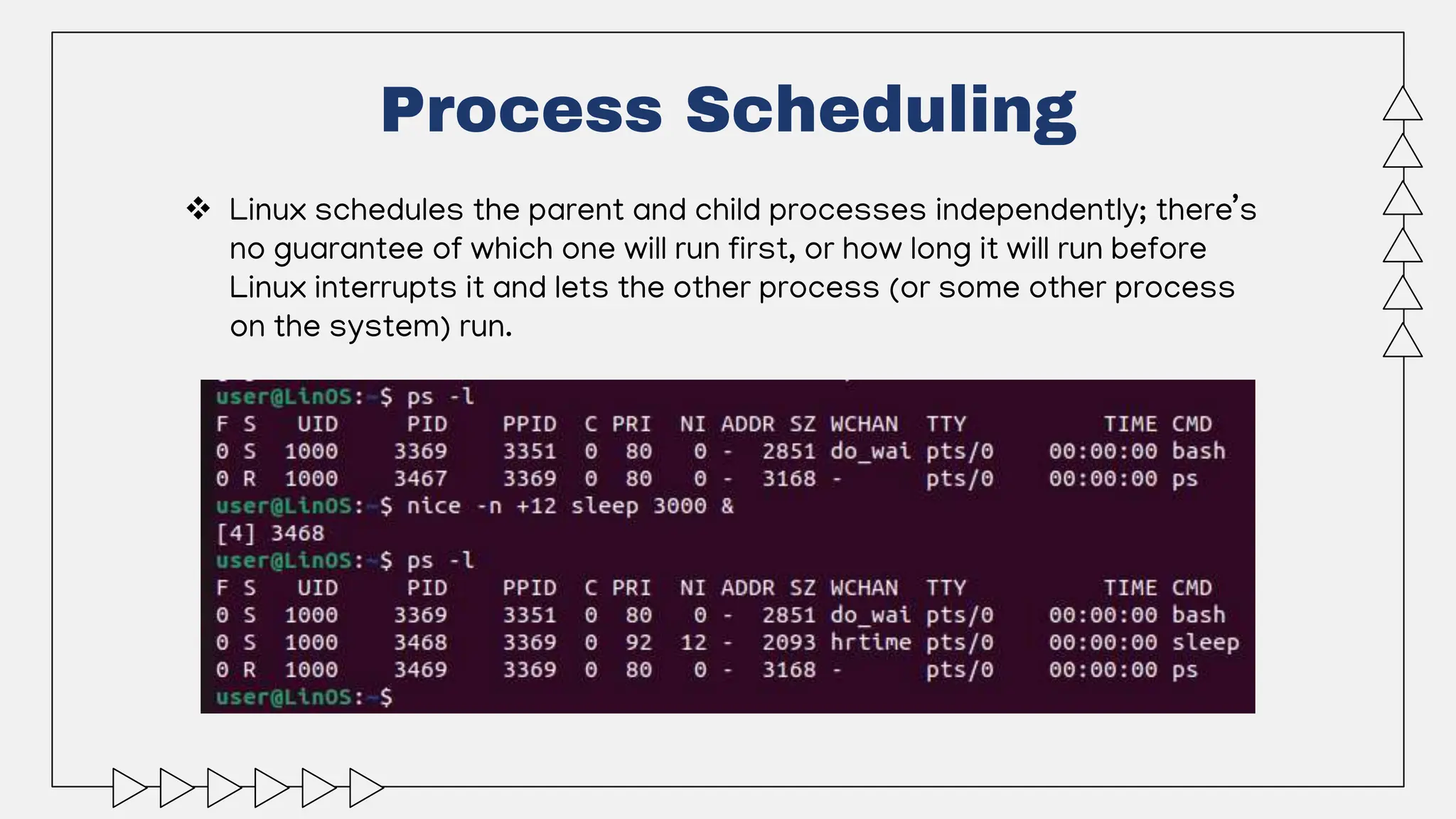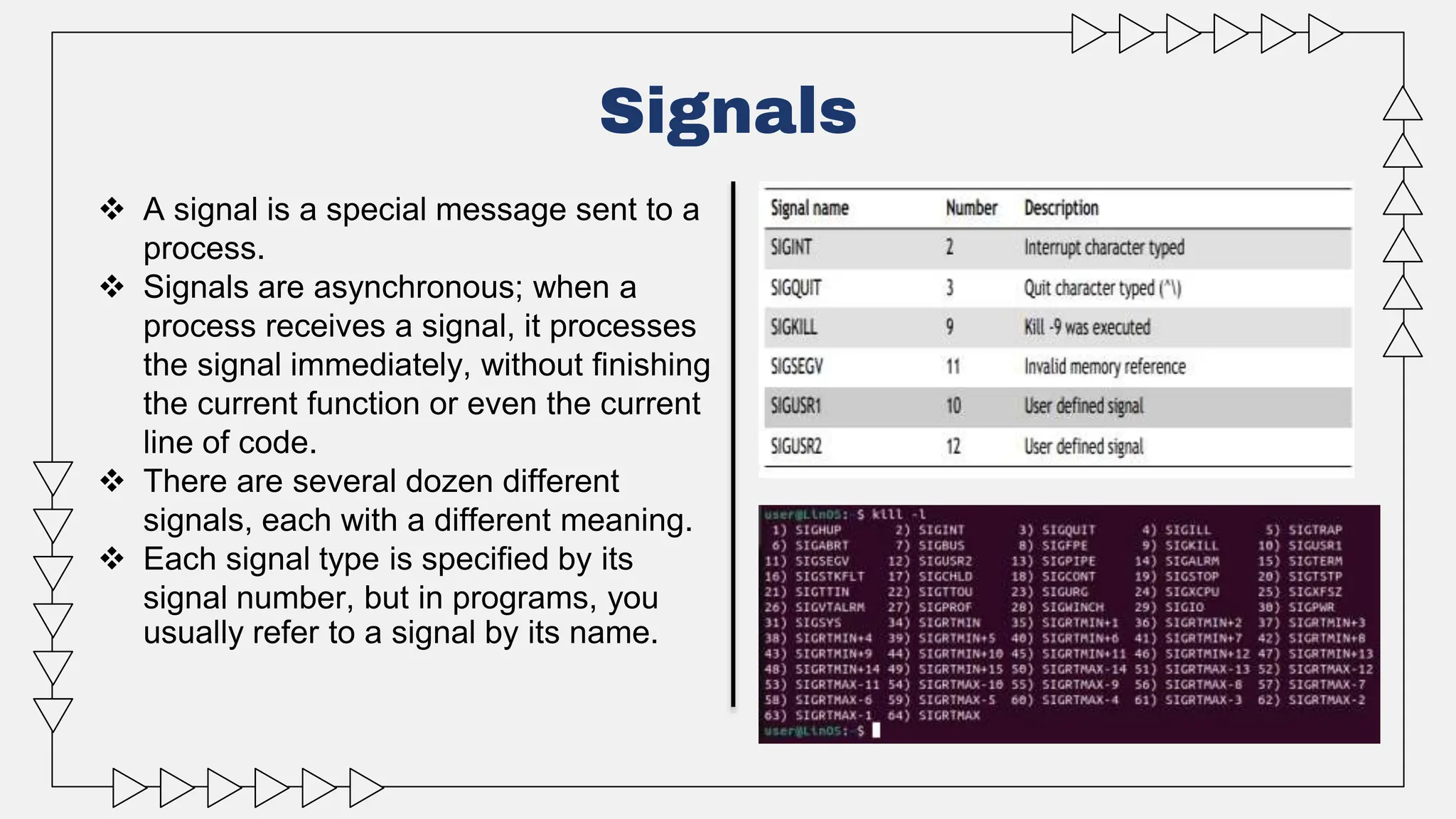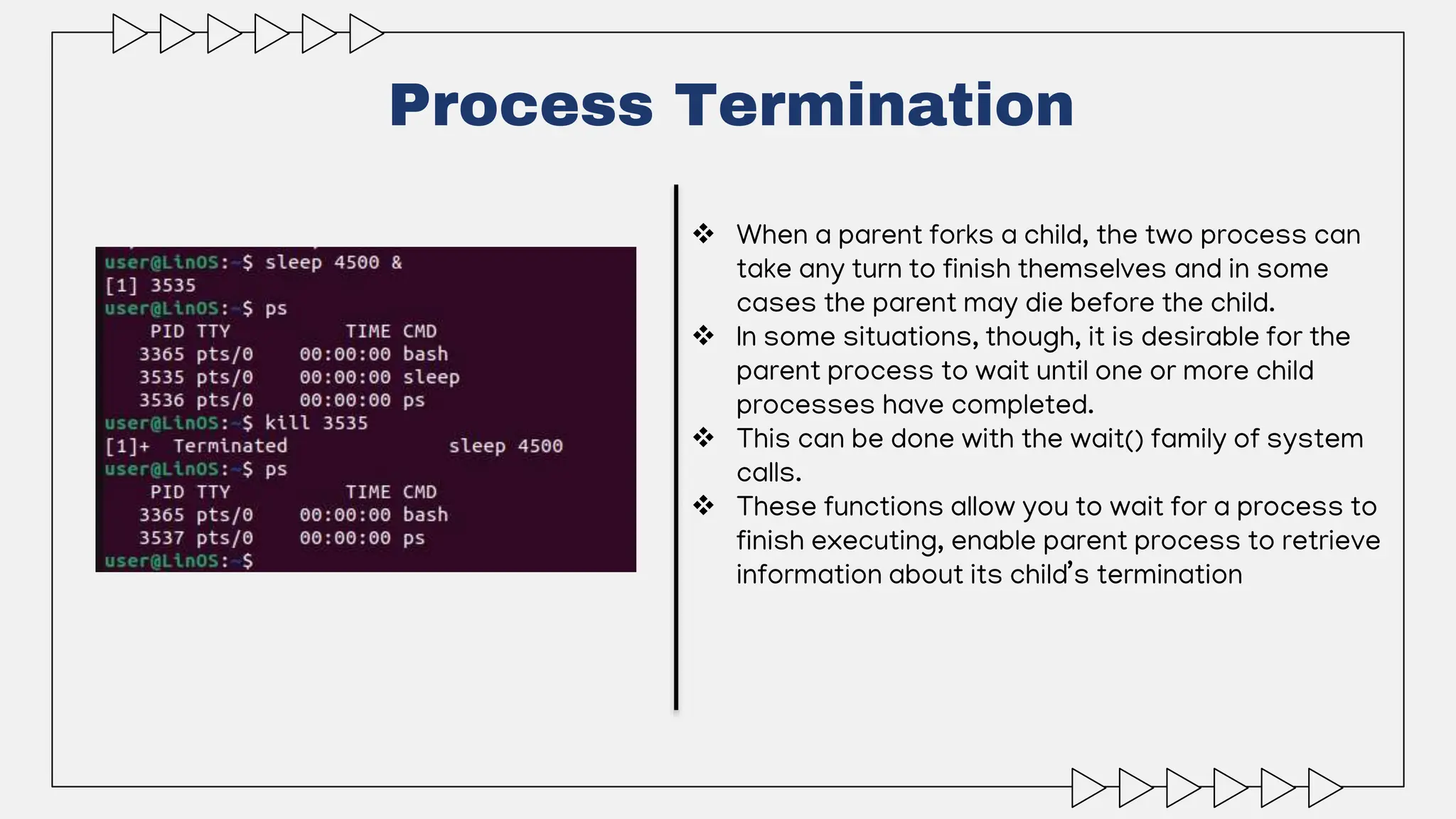The document discusses Linux programming and processes. It covers compiling C and C++ programs with GCC, using makefiles to automate the compilation process, debugging programs with GDB, static and dynamic libraries, the Linux environment and environment variables, creating and managing processes using fork, exec, signals, and process scheduling. It also discusses process states, context switching, and process termination.
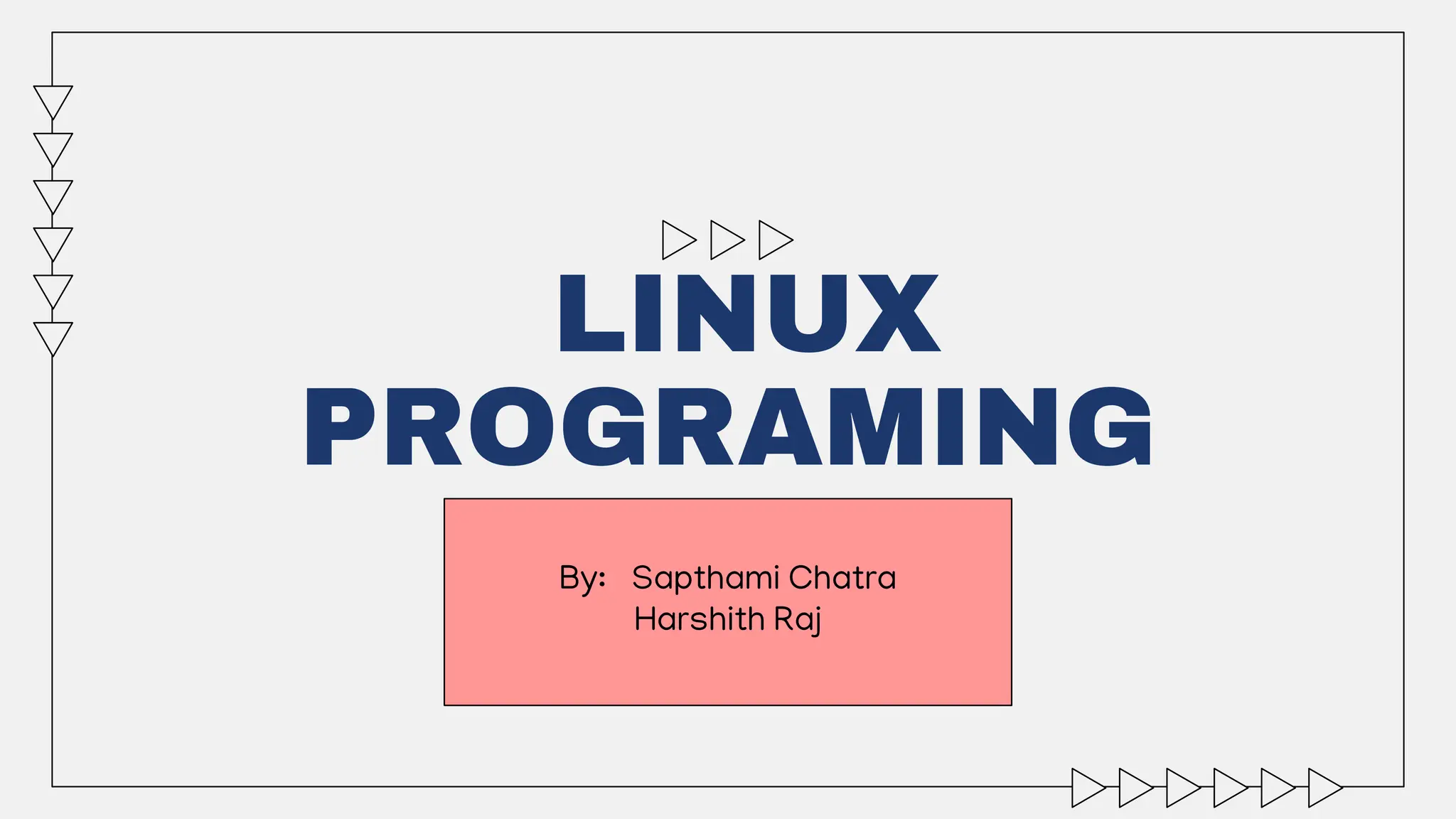
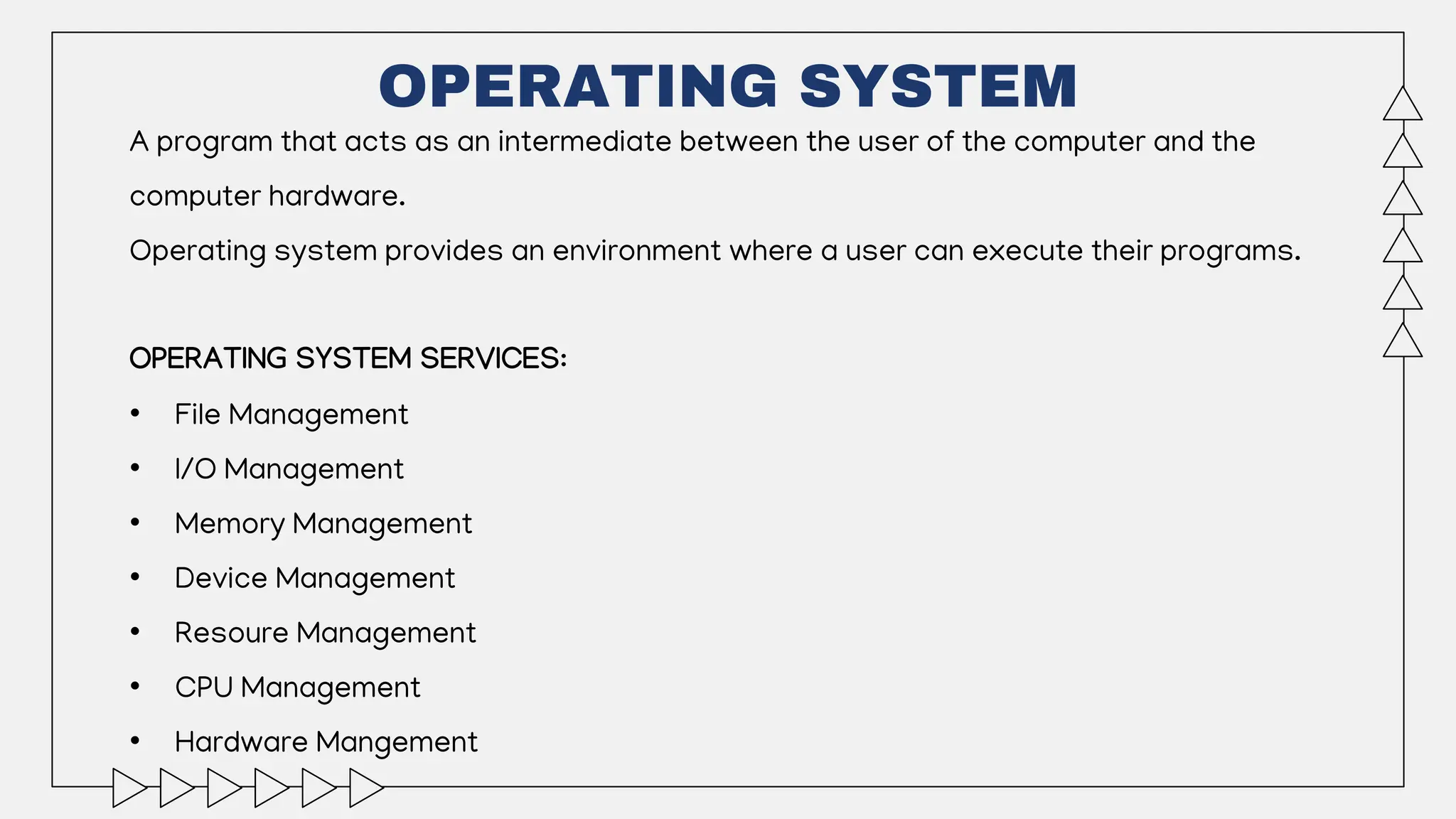
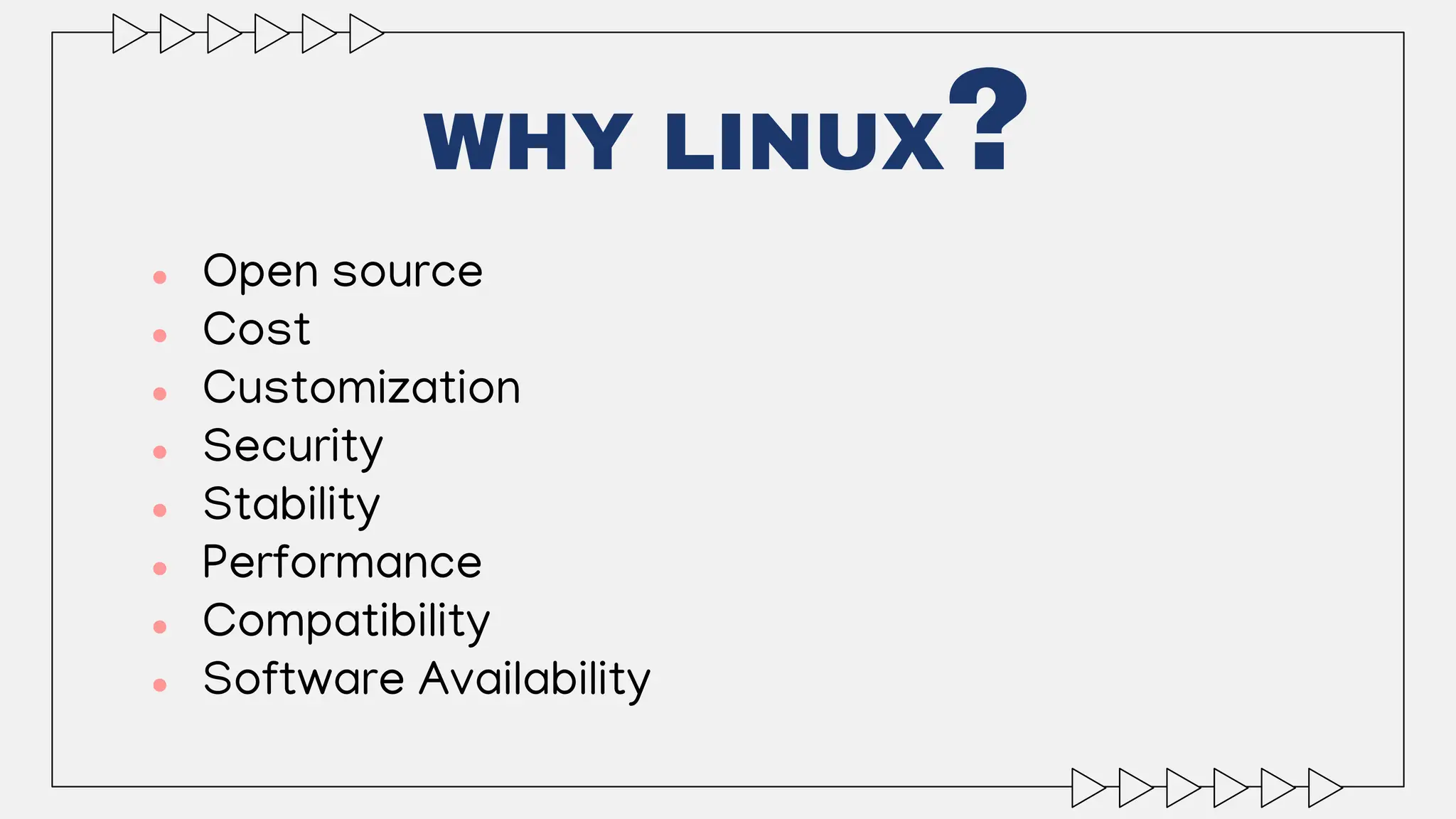
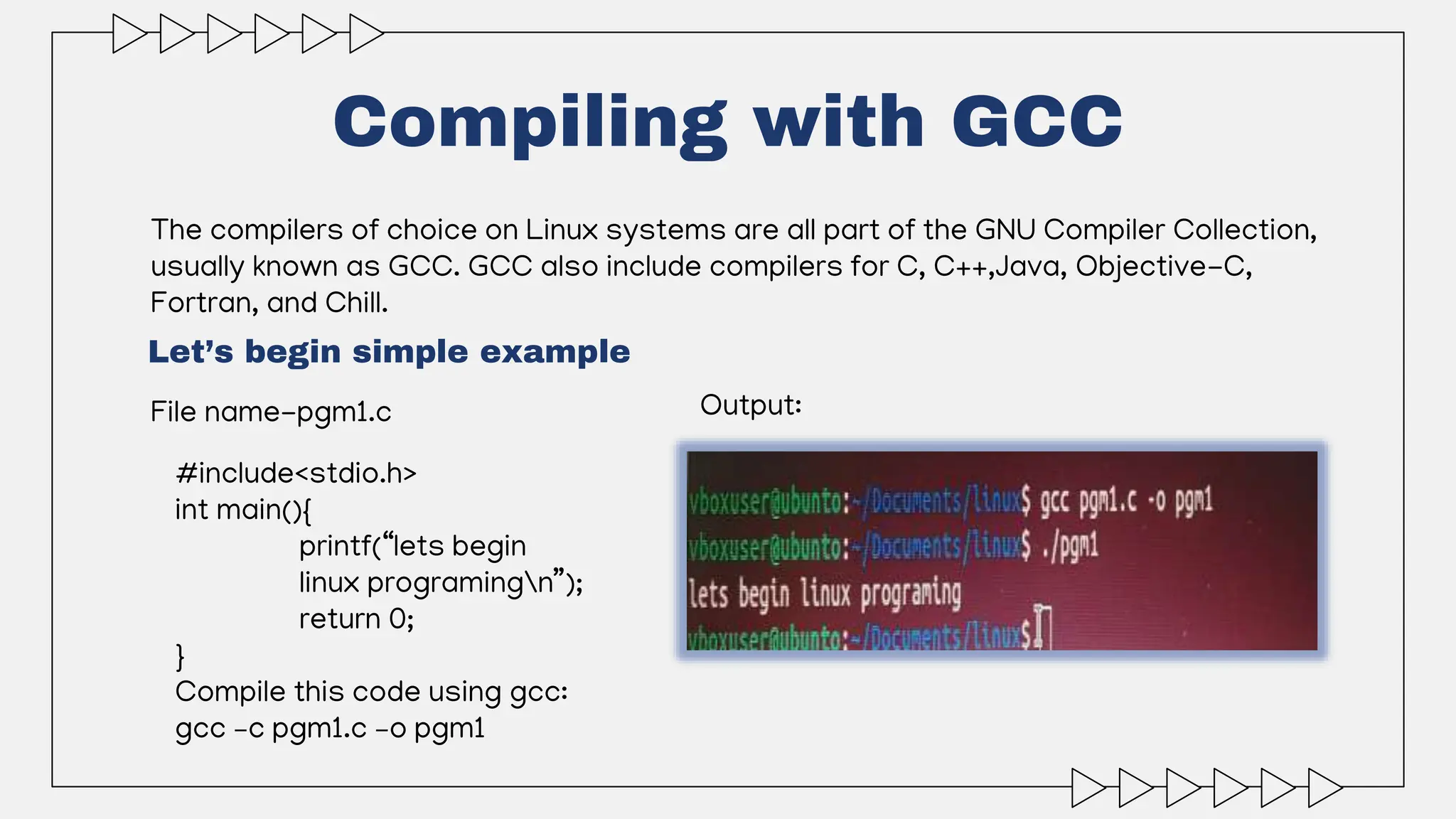
![Compiling with GCC
Compiling multiple source file:
File name-main.c File name-add.cpp headerfile name-add.h
#include <stdio.h>
#include “add.h”
int main(int argc,char ** argv){
int i,j;
i=atoi(argv[1]);
j=atoi(argv[2]);
printf(“the addition of 2
numbers is %dn”,add(i,j);
return 0;
}
Compilation can be done as:
g++ -c main.c add.cpp –o add
#include<stdio.h>
#include “add.h”
Int add(int i,int j){
return i+j;
}
Int add(int i,int j);](https://image.slidesharecdn.com/week-1-240218034908-9e985ff0/75/Process-OS-GNU-Introduction-to-Linux-oS-5-2048.jpg)
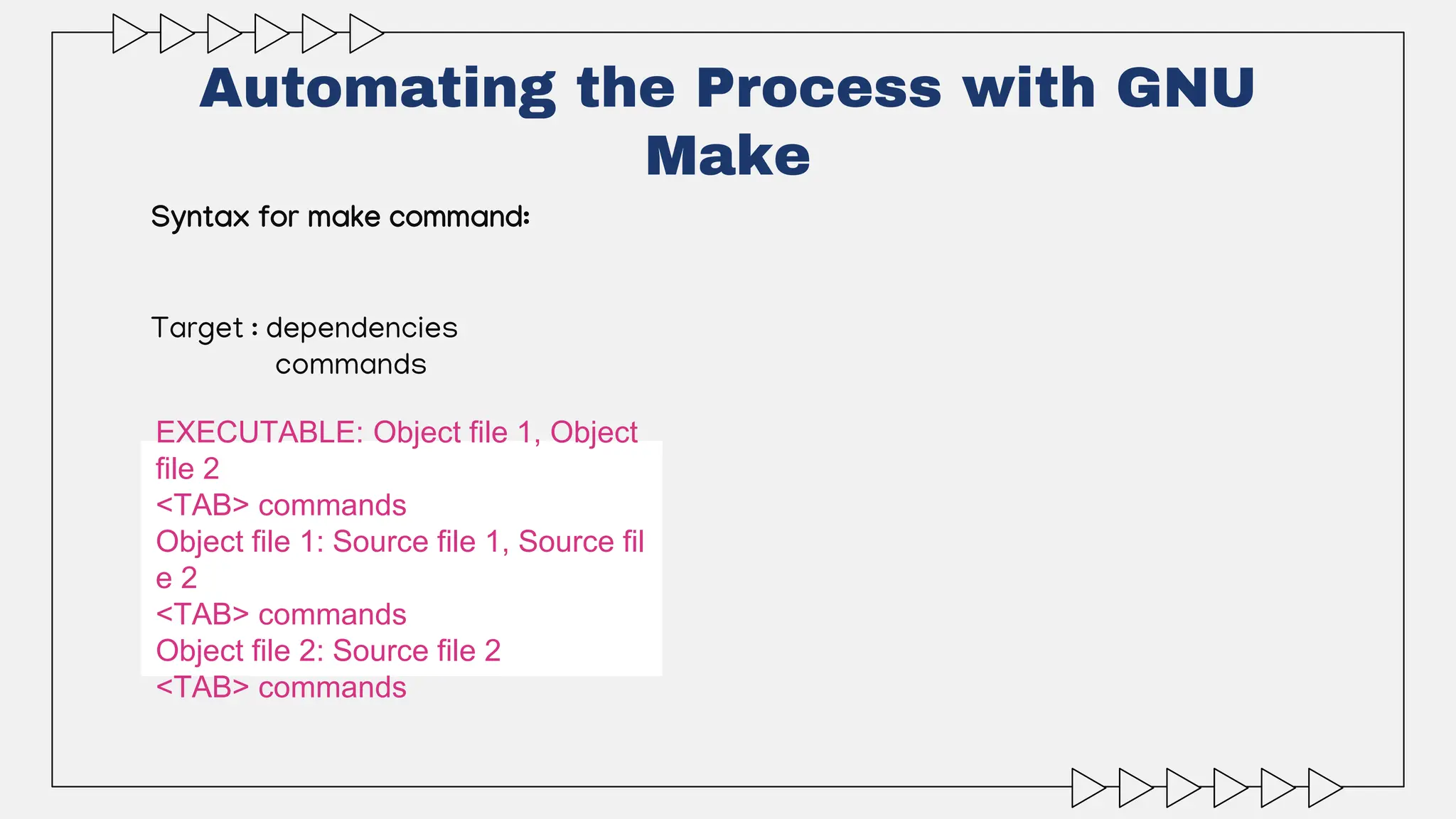
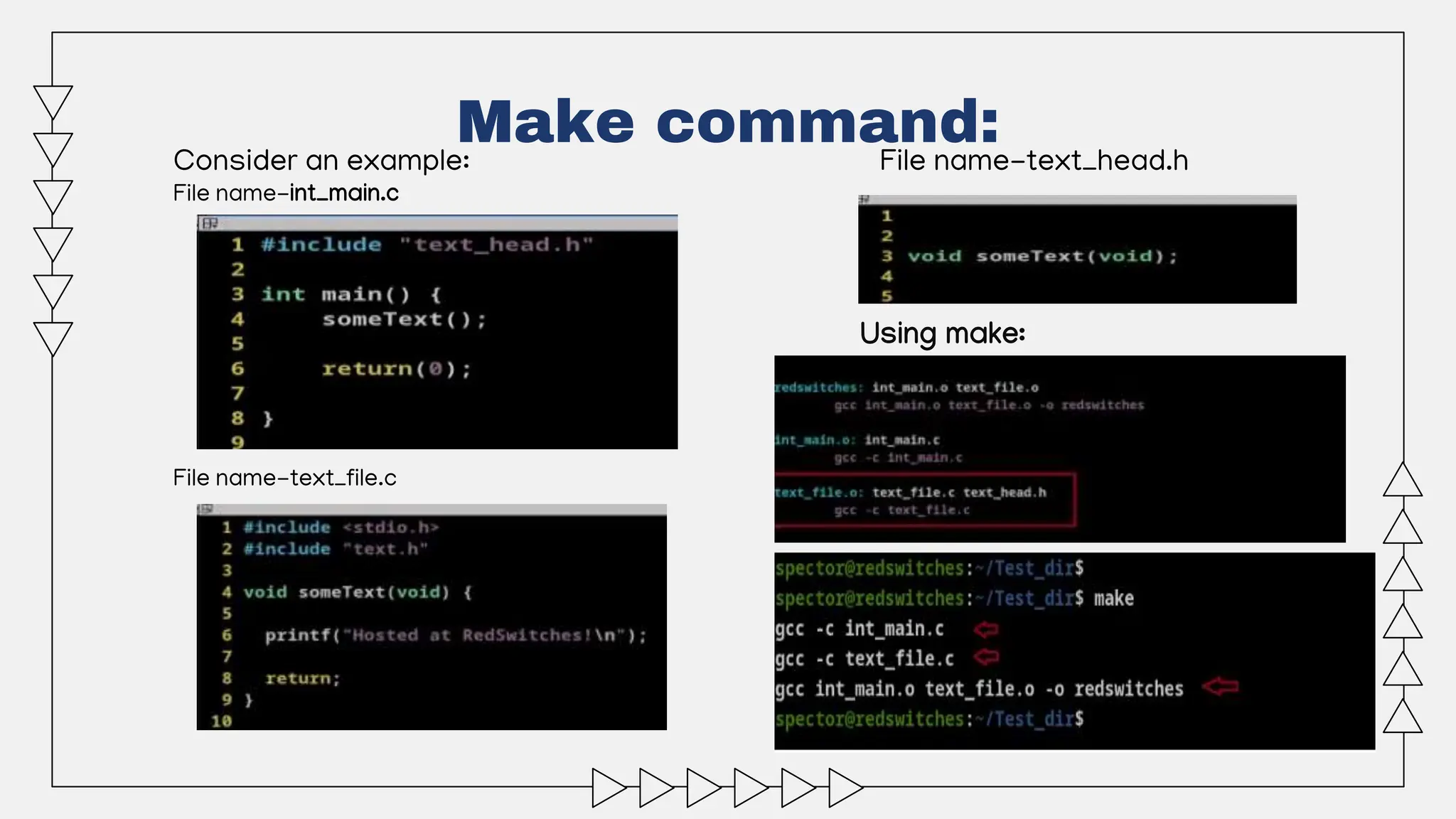
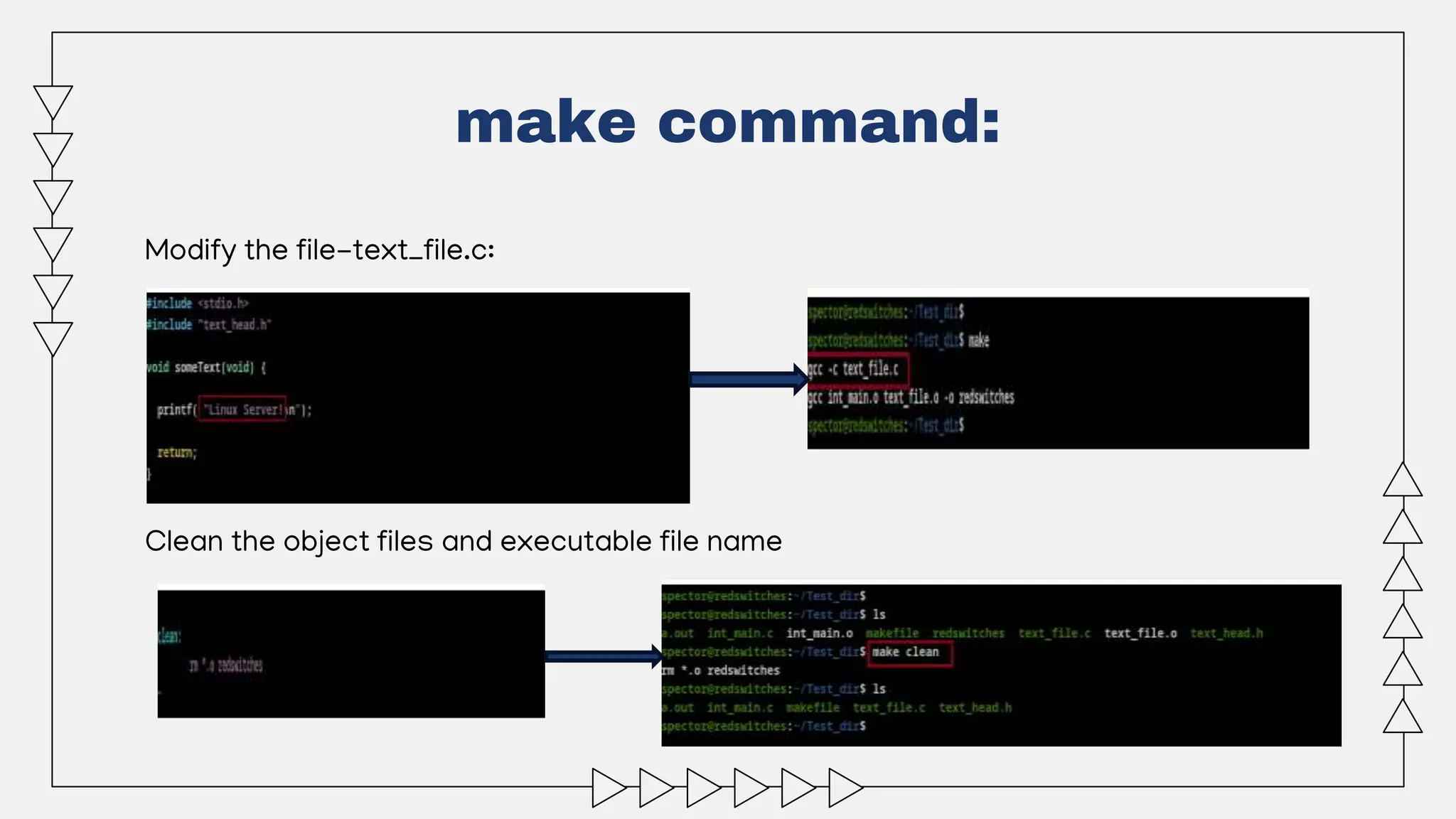
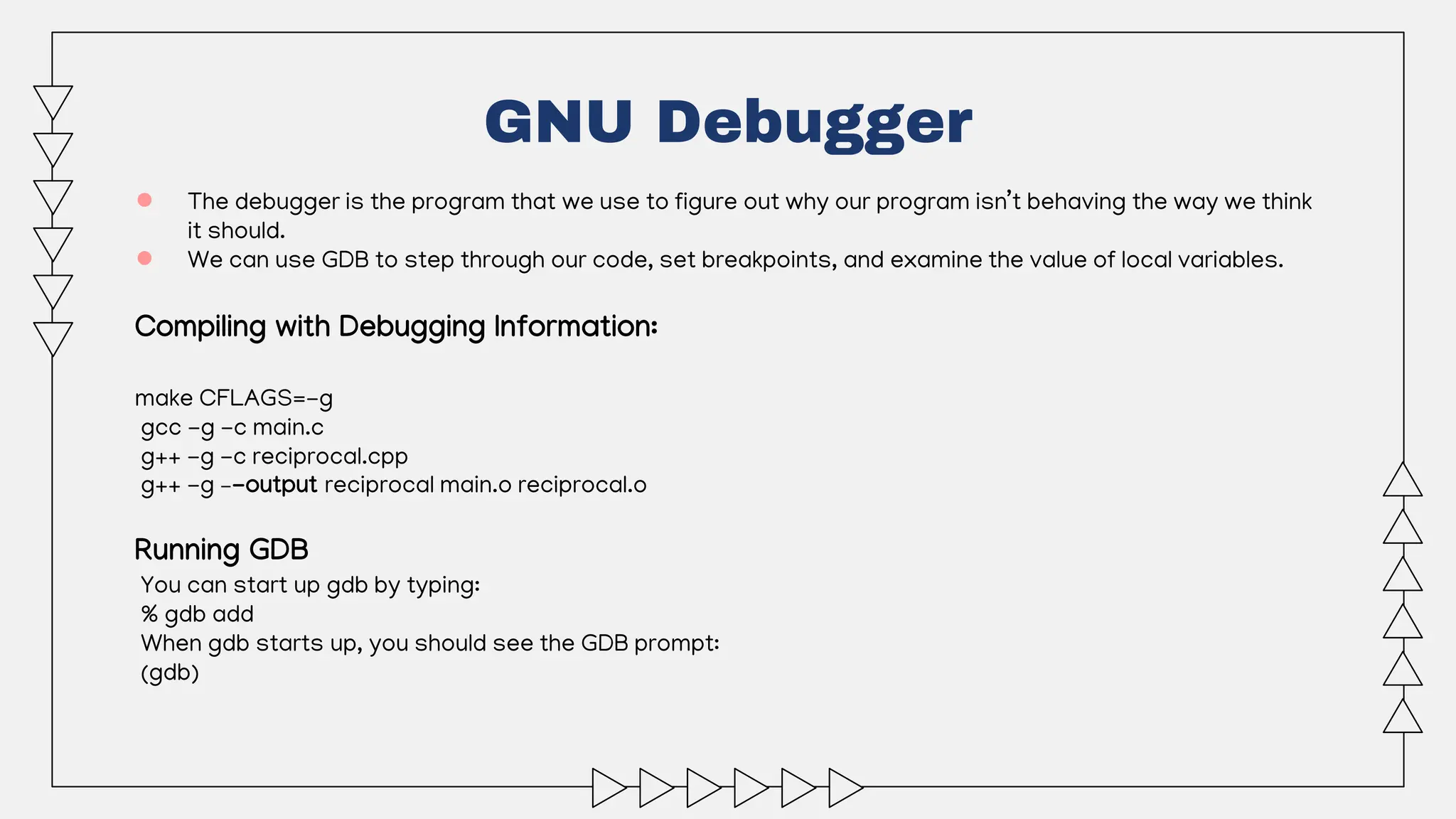
![● run our program inside the debugger
● (gdb) run
● (gdb) break main
Gnu Debugger
Starting program: reciprocal Program
received signal SIGSEGV, Segmentation
fault. __strtol_internal (nptr=0x0,
endptr=0x0, base=10, group=0) at
strtol.c:287 287 strtol.c: No such file or
directory. (gdb)
Breakpoint 1 at 0x804862e: file
main.c, line 8.
● (gdb) run 4 5
Starting program:add 4 5
Breakpoint 1, main (argc=2,
argv=0xbffff5e4) at main.c:8 8 i = atoi
(argv[1]);
● (gdb) next
Addition of 2 numbers is 9](https://image.slidesharecdn.com/week-1-240218034908-9e985ff0/75/Process-OS-GNU-Introduction-to-Linux-oS-10-2048.jpg)
